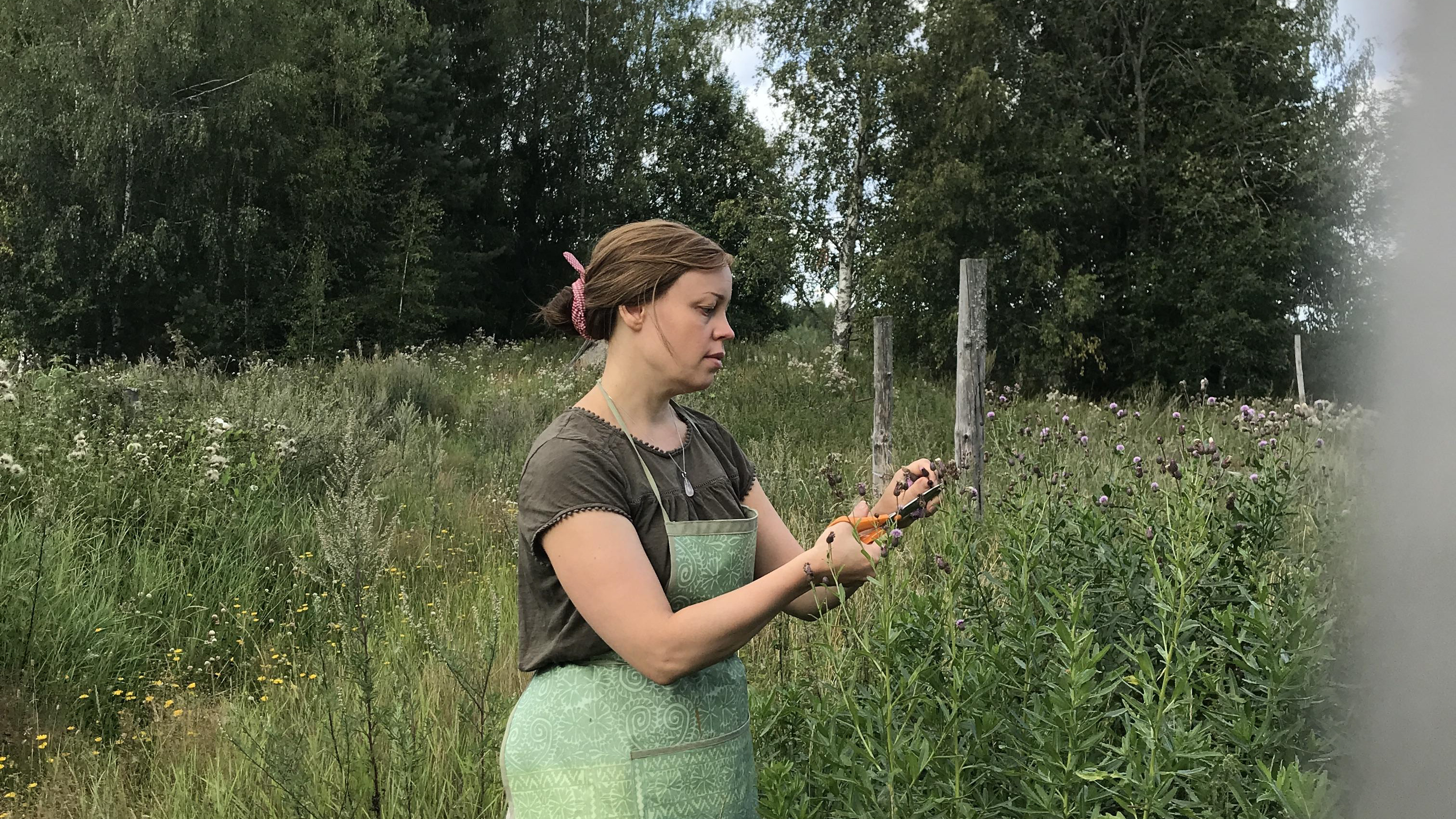Sukuni päiväkirjoja 1800-luvun lopulta lukiessani kiinnitän huomiota siihen, miten tietyt asiat ja toimet toistuvat vuosi vuodelta samaan aikaan. Vaikka Amalia Roosin perheessä ei ollutkaan maanviljelijöitä (he asuivat Nurmeksen pappilassa), oli elämä pitkälti satokauden varassa. Paljon tehtiin itse ja kaikki meni kiertoon.
Tässä projektissa olen päättänyt käyttää värejä, jotka teen itse. Ostan satokauden mukaisia hedelmiä ja vihanneksia sekä viljelen niitä myös. Käytän luonnossa kasvavia kukkia, puita ja kasveja musteiden aineksina. Kaivan bioroskiksesta vesimeloninkuoret ja pyydän lapsiani säästämään nektariininkivet musteaineiksi. Opettelen työstämään luonnonmateriaaleja musteeksi ja pigmentiksi, värjäämään paperia ja kangasta. Teoksen tekeminen ja dokumentoiminen jatkuu kuukaudesta toiseen. Valmiita musteita käytän muissa Käytännöllisen historian museon teoksissa.
When I read the journals of my great grandmother's mother (Mamma) from the 1800's, I notice how different things happen at the same time every year. Even though Mamma's family aren't farmers (The father of the family was a provost and they lived in a parsonage), life followed the seasons of cultivating and harvesting and keeping livestock. Very much of what was needed they made themselves and very little went to waste.
In this project I also am making most of my materials myself. I buy season's vegetables and fruit and also grow them in may garden and vegetable patch. I use the trees, flowers and plants that grow near my home to make colours. I dig the pits of the nectarines that my kids had for breakfast from the compost bin and and make ink from them. I'm learning to make pigments, to dye paper and fabric. Making art and materials goes on from month to month, following the cycle of the year.







